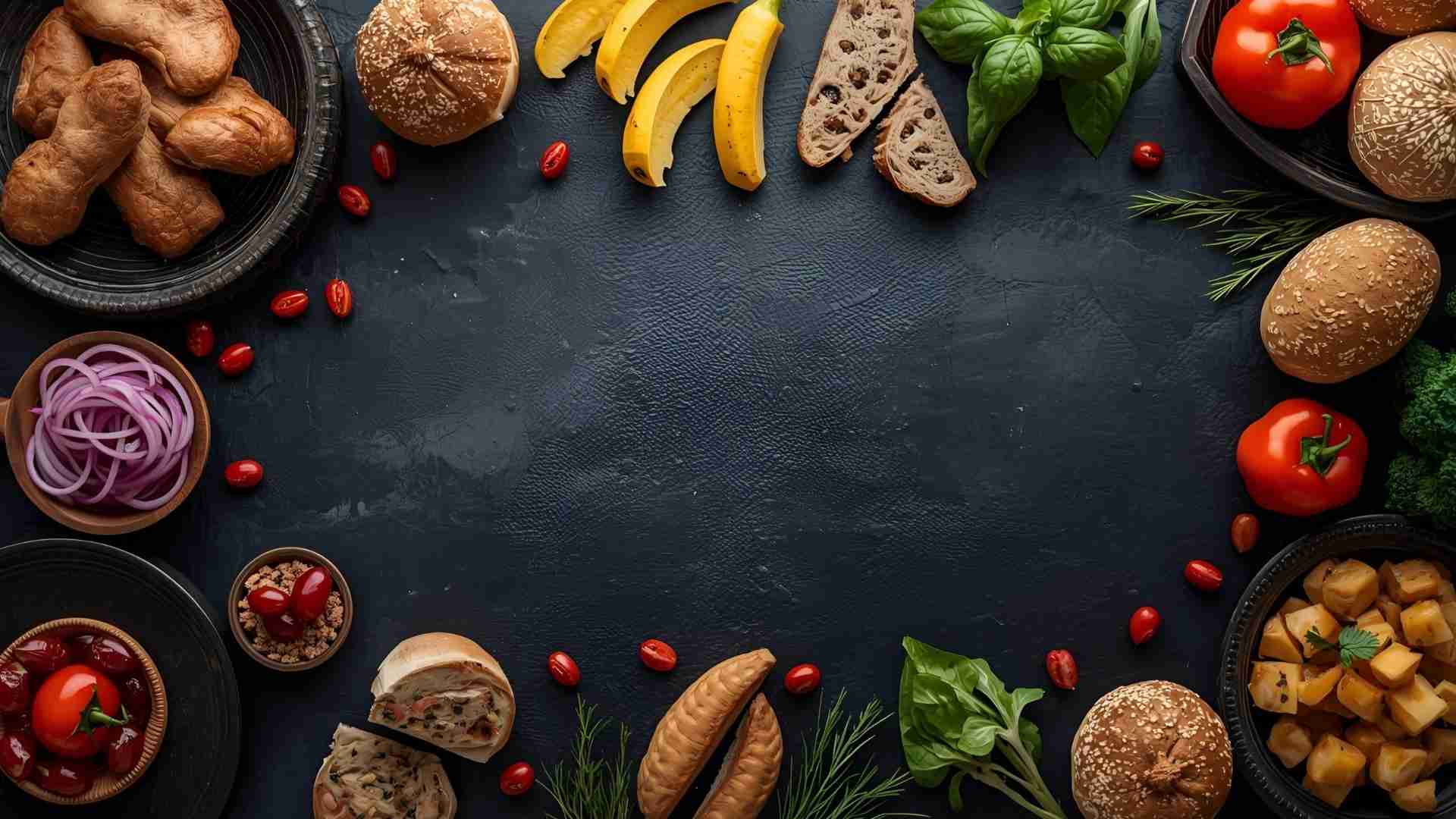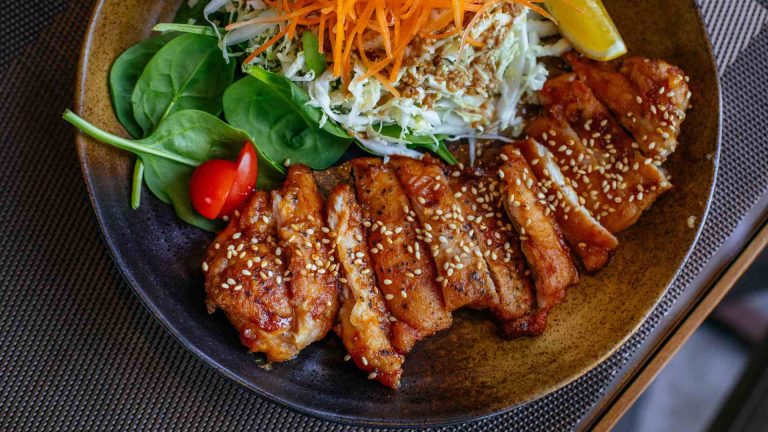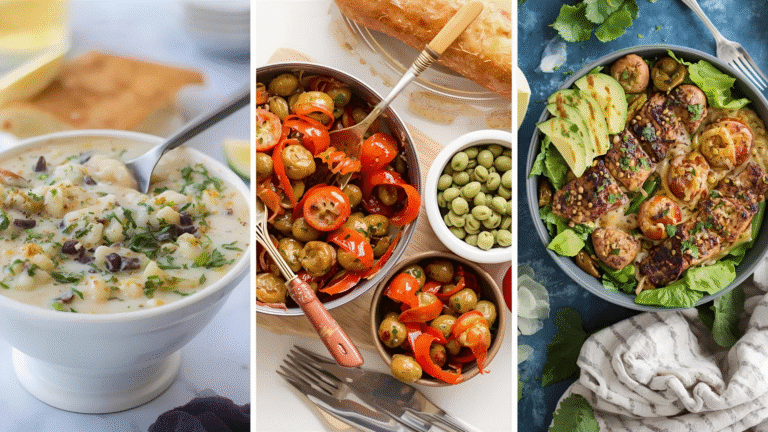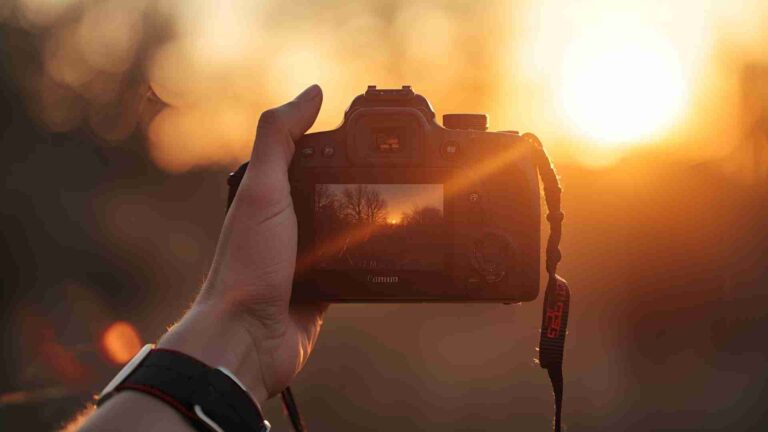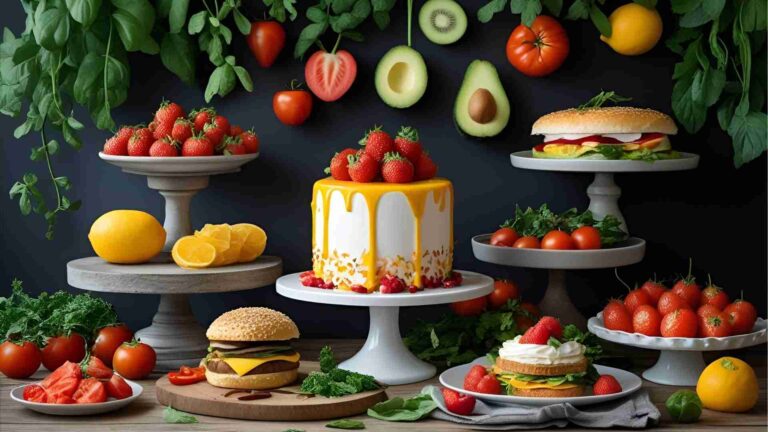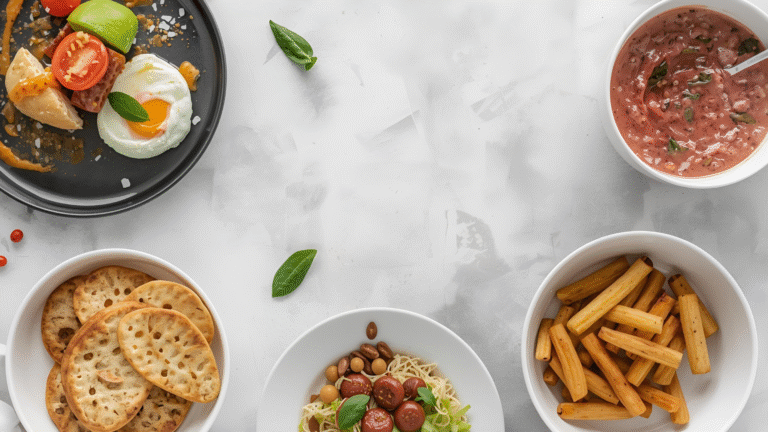The Structure of a Food Photography Estimate
Food photography is an art form that transforms culinary creations into visually stunning images that drive sales, elevate brands, and captivate audiences. Whether you’re a restaurant owner looking to refresh your menu visuals or a food photographer aiming to price your services accurately, understanding the structure of a food photography estimate is crucial. A well-crafted estimate not only ensures clear communication between photographers and clients but also reflects professionalism, expertise, and the value of the work involved. This guide will break down every component of a food photography estimate, from pre-production to post-production, tangible and intangible costs, and licensing fees, providing a roadmap for creating transparent, professional, and competitive estimates. By the end, you’ll have a clear understanding of how to structure an estimate that balances client expectations with fair compensation for your expertise.
Why Food Photography Estimates Matter
A food photography estimate is more than just a price quote; it’s a formal document that outlines the scope of work, deliverables, and associated costs for a project. It serves as a contract of expectations, ensuring both parties understand what’s included in the shoot, from planning to final delivery. For photographers, a detailed estimate showcases professionalism, builds trust, and protects against scope creep. For clients, it provides clarity on what they’re paying for and why, helping them see the value of high-quality food photography. Given the complexity of food photography—requiring creativity, technical skill, and often a team of specialists—estimates must account for every aspect of the process to avoid undercharging or miscommunication.
Food photography is expensive because it involves far more than clicking a shutter. From conceptualizing the shoot to styling delicate dishes and editing images to perfection, every step demands time, expertise, and resources. By breaking down the estimate into clear categories, photographers can educate clients about the process and justify their fees, while clients can make informed decisions about their investment.
Key Components of a Food Photography Estimate
A professional food photography estimate is typically divided into four main categories: Creative Fees, Image Usage Fees, Team Fees, and Expenses. Each category encompasses specific tasks, costs, and considerations that contribute to the overall project cost. Below, we’ll explore each section in detail, providing insights into what to include, why it matters, and how to calculate fair pricing.
1. Creative Fees
The creative fee is the core of a food photographer’s compensation, covering the time, skill, and expertise required to execute a project. It’s not just about the hours spent shooting but also the pre-production and post-production work that ensures the final images meet the client’s goals. The creative fee reflects three key elements: time, experience, and business expenses.
Time
Food photography is time-intensive, and the creative fee must account for every stage of the process:
- Pre-Production: This includes initial consultations with the client to understand their vision, goals, and brand identity. It also involves creating mood boards, sourcing props, scouting locations, and coordinating with the team. For example, a photographer might spend 4-6 hours on calls, emails, and planning for a single shoot. If the client requires a specific aesthetic—say, a rustic farm-to-table vibe—this phase could involve researching vintage props or testing lighting setups, adding to the time commitment.
- Shoot Day: The actual shoot involves setting up equipment, arranging lighting, styling food, and capturing images. Food photography requires meticulous attention to detail, as dishes must look fresh and appetizing. A single shot can take 30-60 minutes to perfect, especially if it involves complex styling like melting ice cream or steam rising from a dish. A typical shoot day might last 8-10 hours, including setup and breakdown.
- Post-Production: Editing is where the magic happens, transforming raw images into polished, brand-ready visuals. This includes selecting the best shots, color-correcting, retouching imperfections (e.g., removing a stray crumb), and formatting files for delivery. Post-production can take 1-2 hours per image, depending on the complexity. For a 10-image shoot, that’s 10-20 hours of editing.
To calculate the time component, photographers should track their hours meticulously. For example, a project requiring 6 hours of pre-production, an 8-hour shoot, and 15 hours of editing totals 29 hours. If the photographer’s hourly rate is $150, the time-based portion of the creative fee would be $4,350.
Experience
A photographer’s experience significantly impacts the creative fee. Seasoned professionals with years of expertise, a strong portfolio, and a reputation for delivering high-quality images command higher rates. Their ability to solve problems on set, direct a team, and produce consistent results adds value that clients are willing to pay for. For instance, an experienced photographer might charge $3,000-$5,000 per day, while a beginner might charge $500-$1,000. Experience also includes intangibles like creativity, problem-solving, and the ability to work under pressure, such as when a dish wilts or a client changes the brief mid-shoot.
Business Expenses
Running a photography business involves significant overhead, which should be factored into the creative fee. These include:
- Equipment Maintenance: Cameras, lenses, lighting equipment, and tripods require regular upkeep or replacement. A professional-grade camera setup can cost $10,000-$20,000, and maintenance costs add up over time.
- Software Subscriptions: Editing software like Adobe Photoshop and Lightroom typically costs $10-$20 per month.
- Insurance: Liability and equipment insurance protect against accidents or damage on set, costing $500-$2,000 annually.
- Marketing and Administration: Website hosting, marketing materials, and accounting services are ongoing expenses that ensure the business runs smoothly.
To account for business expenses, photographers should calculate their annual overhead and divide it by the number of billable hours per year. For example, if annual expenses are $50,000 and the photographer works 1,000 billable hours, they need to charge at least $50 per hour to break even, before factoring in profit.
Example Creative Fee Calculation:
| Component | Hours | Rate | Total |
|---|---|---|---|
| Pre-Production | 6 | $150 | $900 |
| Shoot Day | 8 | $150 | $1,200 |
| Post-Production | 15 | $150 | $2,250 |
| Business Overhead (20% of total) | – | – | $870 |
| Total Creative Fee | – | – | $5,220 |
2. Image Usage Fees
Image usage fees, also known as licensing fees, are a critical component of a food photography estimate. Unlike personal photography (e.g., weddings), commercial food photography involves images used to promote a business, making them highly valuable. Photographers retain copyright to their images, and clients pay for the right to use them for specific purposes, durations, and platforms.
Understanding Image Usage
Usage fees depend on several factors:
- Scope of Use: Images used for a local restaurant’s menu have a narrower scope than those used in a national advertising campaign. Broader usage (e.g., billboards, TV ads) commands higher fees.
- Duration: Licensing is often time-bound, such as 1 year or 2 years. Longer durations increase the fee.
- Exclusivity: If a client wants exclusive rights (preventing the photographer from licensing the images to others), the fee is significantly higher.
- Client Size: Large corporations like global food brands pay more than small, local businesses due to their wider reach and revenue potential.
For example, licensing a single image for a local restaurant’s social media for 1 year might cost $200-$500, while the same image used in a national ad campaign could cost $2,000-$5,000. Tools like the Getty Image Licensing Calculator or the AOP Usage Calculator can provide ballpark figures, though photographers often adjust rates based on client size. For small businesses, some photographers may waive or reduce licensing fees to fit tighter budgets, but they should still include usage terms in the estimate to clarify restrictions.
Calculating Usage Fees
To estimate usage fees, photographers can use a multiplier based on the scope of use:
- Local Use (e.g., single restaurant menu): 1x base rate ($200-$500 per image).
- Regional Chain: 2.5x base rate ($500-$1,250 per image).
- National Campaign: 4x base rate ($800-$2,000 per image).
- Cookbook Publication: 3x base rate + royalties ($600-$1,500 per image).
For a 10-image shoot for a regional chain, the usage fee might range from $5,000-$12,500, depending on the duration and exclusivity.
Example Usage Fee Table:
| Usage Type | Base Rate | Multiplier | Per Image | Total (10 Images) |
|---|---|---|---|---|
| Local Restaurant Menu | $300 | 1x | $300 | $3,000 |
| Regional Chain | $300 | 2.5x | $750 | $7,500 |
| National Campaign | $300 | 4x | $1,200 | $12,000 |

3. Team Fees
Many food photography projects require a team to execute the vision efficiently. Team fees cover the cost of hiring specialists who enhance the quality of the shoot. Common team members include:
- Food Stylist ($500-$1,000/day): Styles food to look appetizing, often requiring advanced techniques like managing steam or ice cream melt.
- Food Stylist Assistant ($200-$400/day): Assists with prep and on-set tasks.
- Prop Stylist ($400-$800/day): Sources and arranges props to match the creative vision.
- Photography Assistant ($200-$500/day): Helps with lighting, equipment, and setup.
- Digital Tech ($300-$600/day): Manages digital files and tethered shooting.
- Producer ($500-$1,500/day): Oversees logistics and ensures the shoot runs smoothly.
Team fees vary by location and project complexity. For example, a simple restaurant menu shoot might only require a food stylist, while a national ad campaign could need a full crew. Overtime fees (typically 1.5x the hourly rate) apply if the shoot exceeds the planned duration.
Example Team Fee Breakdown:
| Role | Day Rate | Days | Total |
|---|---|---|---|
| Food Stylist | $800 | 1 | $800 |
| Food Stylist Assistant | $300 | 1 | $300 |
| Prop Stylist | $600 | 1 | $600 |
| Photography Assistant | $400 | 1 | $400 |
| Total Team Fees | – | – | $2,100 |
4. Expenses
Expenses are the tangible costs incurred during a project, separate from the creative and team fees. These vary widely depending on the project’s requirements and should be itemized clearly in the estimate to avoid eating into the photographer’s profits.
Common Expenses
- Equipment Rental: Specialized gear like high-end lenses or lighting equipment might cost $100-$500 per day.
- Props and Surfaces: Custom backdrops, tableware, or linens can range from $50-$500, depending on whether they’re purchased or rented.
- Food and Ingredients: Grocery costs for fresh produce or specialty items can add $100-$1,000, especially if multiple takes are needed.
- Studio Rental: A professional studio might cost $500-$2,000 per day, depending on location and amenities.
- Travel and Location Fees: Gas, flights, or lodging for on-location shoots can range from $50-$2,000.
- Insurance: Project-specific insurance might cost $100-$500.
- Retouching: Additional retouching beyond basic editing might cost $50-$200 per image.
Example Expense Breakdown:
| Expense | Cost |
|---|---|
| Equipment Rental | $300 |
| Props and Surfaces | $200 |
| Food and Ingredients | $400 |
| Studio Rental | $800 |
| Travel Fees | $150 |
| Total Expenses | $1,850 |
Structuring the Estimate Document
A professional food photography estimate is a branded, formal document that clearly communicates all costs and deliverables. Here’s how to structure it:
Top Section: Project Details
- Photographer’s Branding: Include your logo, company name, and contact information.
- Estimate Number and Job Title: Assign a unique number and descriptive title (e.g., “Summer Menu Shoot for XYZ Restaurant”).
- Client Information: Include the client’s name, business name, and billing details.
- Project Description: Summarize the scope, including the number of images, shot list, and creative direction.
Middle Section: Costs and Fees
- Creative Fees: Break down pre-production, shoot day, and post-production time, with subtotals.
- Image Usage Fees: Specify the licensing terms, including scope, duration, and exclusivity.
- Team Fees: List each team member, their role, and their rate.
- Expenses: Itemize all tangible costs, noting that some (e.g., groceries) are estimates subject to change.
Bottom Section: Terms and Conditions
- Payment Terms: Specify deposit requirements (e.g., 50% upfront) and final payment due date.
- Cancellation Policy: Outline fees for cancellations or rescheduling.
- Usage Restrictions: Clarify that images cannot be used beyond the agreed terms without additional licensing.
- Signature Line: Include space for client approval to formalize the agreement.
Sample Estimate Template:
[Your Logo]
[Your Company Name]
[Contact Info]
Estimate #1234: Summer Menu Shoot for XYZ Restaurant
Bill To:
XYZ Restaurant
123 Main St, City, State
Contact: Jane Doe, jane@xyzrestaurant.com
Project Description:
- 10 final images for menu and social media
- Shot list: 5 signature dishes, 3 cocktails, 2 ambiance shots
- Creative direction: Modern, vibrant aesthetic with natural lighting
Creative Fees:
- Pre-Production (6 hours @ $150/hr): $900
- Shoot Day (8 hours @ $150/hr): $1,200
- Post-Production (15 hours @ $150/hr): $2,250
- Business Overhead (20%): $870
Subtotal: $5,220
Image Usage Fees:
- 10 images, social media and menu use, 1 year, non-exclusive: $3,000
Team Fees:
- Food Stylist (1 day @ $800): $800
- Food Stylist Assistant (1 day @ $300): $300
- Prop Stylist (1 day @ $600): $600
- Photography Assistant (1 day @ $400): $400
Subtotal: $2,100
Expenses:
- Equipment Rental: $300
- Props and Surfaces: $200
- Food and Ingredients: $400
- Studio Rental: $800
- Travel Fees: $150
Subtotal: $1,850
Total Estimated Cost: $12,170
Deposit (50%): $6,085
Terms and Conditions:
- 50% deposit due upon signing; balance due upon delivery.
- Cancellation within 48 hours incurs 50% fee.
- Images licensed for specified use only; additional usage requires new agreement.
Client Signature: ____________________ Date: ________Best Practices for Creating Food Photography Estimates
To ensure your estimates are professional and effective, follow these best practices:
- Ask Questions Upfront: Before preparing an estimate, ask clients about their creative vision, shot list, timeline, budget, and usage plans. This prevents underestimating costs and ensures the estimate aligns with their needs.
- Be Transparent: Clearly itemize all fees and expenses, noting which costs (e.g., groceries) are estimates. Transparency builds trust and reduces disputes.
- Use Professional Tools: Software like BlinkBid, QuickBooks, or fotoQuote can streamline estimate creation, track expenses, and manage licensing. For example, BlinkBid offers pre-programmed fee categories and electronic signatures.
- Include Terms and Conditions: Protect yourself with clear payment terms, cancellation policies, and usage restrictions. Consult an attorney to draft a robust contract.
- Educate Clients: Many clients don’t understand the complexity of food photography. Explain the value of your time, expertise, and the impact of high-quality images on their business.
- Adjust for Client Size: Scale licensing fees based on the client’s reach. A small café pays less than a national brand, but ensure your creative fee covers your time and overhead.
- Avoid Common Mistakes:
- Undervaluing Your Work: Don’t lower rates to win a job; instead, offer tiered packages or fewer deliverables.
- Ignoring Licensing: Always include usage terms to protect your copyright and ensure fair compensation.
- Overcommitting: Factor in all time costs to avoid burnout and ensure profitability.
Pricing Models for Different Clients
Food photography pricing varies by client type and project scope. Here’s how to approach pricing for different scenarios:
- Restaurants: Offer packages (e.g., 10 images for $1,500-$3,000) that include menu and social media shots. Keep licensing fees modest for local businesses.
- Food Bloggers: Charge per project or per image ($100-$500 per image), as their budgets are often limited.
- Magazines: Price by project or image size (e.g., $500-$3,000 for a feature story). Include stylist fees if required.
- Food Brands: Use day rates ($3,000-$10,000) or per-shot pricing for complex shoots, with higher licensing fees for national campaigns.
- Cookbooks: Quote per project ($5,000-$20,000+), factoring in multiple shoot days, team costs, and royalties.
Pricing Range Table:
| Client Type | Typical Range | Key Considerations |
|---|---|---|
| Restaurants | $500-$3,000/project | Menu shots, social media, modest licensing |
| Food Bloggers | $100-$500/image | Per-post or per-project, flexible terms |
| Magazines | $500-$3,000/project | Feature vs. filler, stylist fees |
| Food Brands | $3,000-$10,000/day | Complex shoots, high licensing fees |
| Cookbooks | $5,000-$20,000+/project | Multi-day shoots, royalties |
Tools and Resources for Estimating
Several tools can help photographers create accurate and professional estimates:
- BlinkBid: Offers templates for commercial photography, tracks expenses, and manages licensing. Cost: $20/month.
- fotoQuote: Provides a database for licensing rates and quote-building tools. Cost: $149 one-time fee.
- Getty Image Licensing Calculator: Free tool for estimating usage fees, though rates may need scaling for smaller clients.
- AOP Usage Calculator: UK-based tool for cross-referencing licensing rates. Free to use.
- APA Business Manual: Offers guidance on licensing, terms, and conditions. Free download for non-members.
- QuickBooks: Tracks expenses and generates invoices. Cost: $25-$150/month.
The ROI of Food Photography
Investing in professional food photography delivers significant returns. High-quality images can increase restaurant orders by 20-35%, boost social media engagement, and enhance brand perception. For example, a well-styled dish photo can drive online orders on platforms like Uber Eats or attract diners through Instagram. By aligning photography with marketing goals—such as launching a new menu or promoting a seasonal campaign—clients maximize the impact of their investment.
Conclusion
Creating a food photography estimate is a balancing act between covering your costs, reflecting your expertise, and meeting client expectations. By structuring your estimate into creative fees, image usage fees, team fees, and expenses, you ensure transparency and professionalism. Use tools like BlinkBid and the Getty Calculator to streamline the process, and always include clear terms and conditions to protect your rights. Whether you’re shooting for a local café or a national brand, a well-crafted estimate educates clients about the value of your work and sets the stage for a successful project. With this guide, you’re equipped to create estimates that drive profitability and showcase the power of food photography to elevate brands and tantalize taste buds.
This article to structuring a food photography estimate, incorporating all key components from the original content while expanding on each section for clarity and depth. Pricing ranges and tools are included where applicable, and the structure is designed to rank well on Google by addressing user intent and providing actionable insights.
Please share this The Structure of a Food Photography Estimate with your friends and do a comment below about your feedback.
We will meet you on next article.
Until you can read, Food Photography Styling Tools
